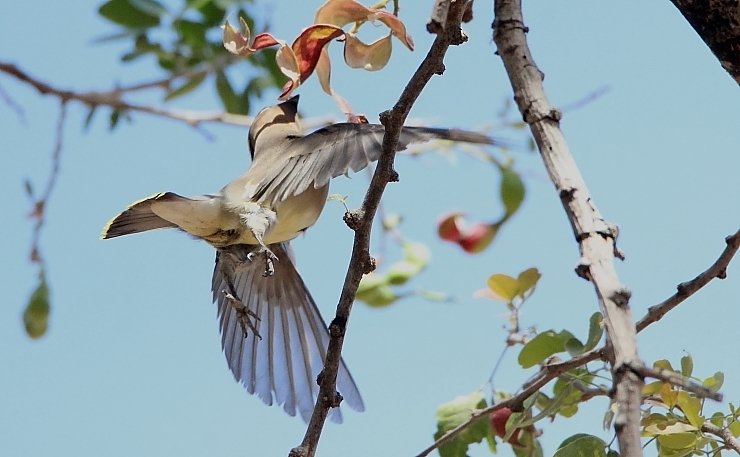
Pithecellobium dulce is a tree with many English names. The most common one, Manila tamarind, is wildly inaccurate, since the tree is native to southwestern Mexico, not Manila, and its only connection to tamarind trees is that both are in different subfamilies of the huge legume family. I first met the tree in Baja California, where it is known as guamúchil (gwa-MOOCH-eel), so I will call it that.
The Guamúchil is a large, drought-tolerant tree that produces long pods filled with hard black seeds surrounded by a white or pinkish pulp. This pulp has a slightly sweet flavor, whose taste I learned to enjoy from my Mexican friends. What I didn’t realize, at the time, was that this pulp is also enjoyed by many bird species.
I recently traveled down to Paso Ancho, my go-to site in Michoacán’s Tierra Caliente (Hot Country). I go there every year around this time, because in 2016 I saw Sinaloa Martins migrating north to breed. (This species is rarely seen and almost unstudied. No one knows where they spend winters.) I have yet to see them there again in spring, although I now have four late-summer sightings from their trip south for the winter. Still, I feel it is my scientific duty to make at least one try each spring.
Since the Sinaloa Martins were, once again, no-shows, I consoled myself with the area’s many wonderful endemics and, above all, the show at March’s main attraction: all the birds feeding on guamúchil fruits. The action was fast and furious, and many of the birds feeding are singularly attractive.
As soon as I reached the little town of Paso Ancho, I saw Yellow-winged Caciques feeding on these pods. Usually these birds are a bit harder to see up close.
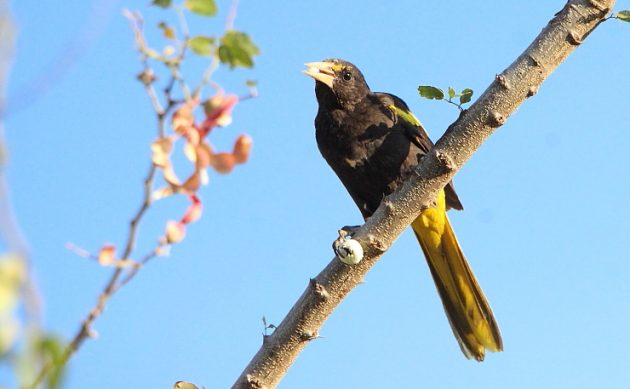
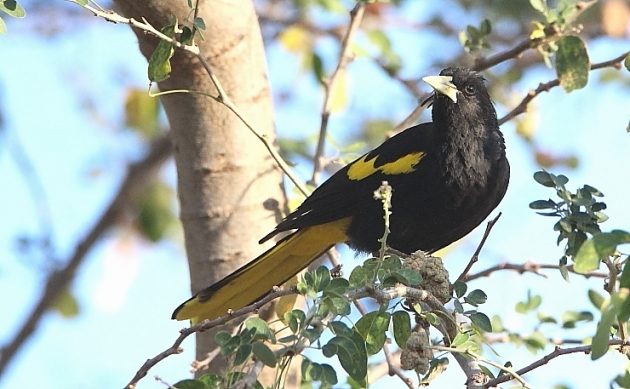
It always surprises me to see Tyrant Flycatchers eating fruit. But there is no doubt at all that this Thick-billed Kingbird was feasting on guamúchil pods.
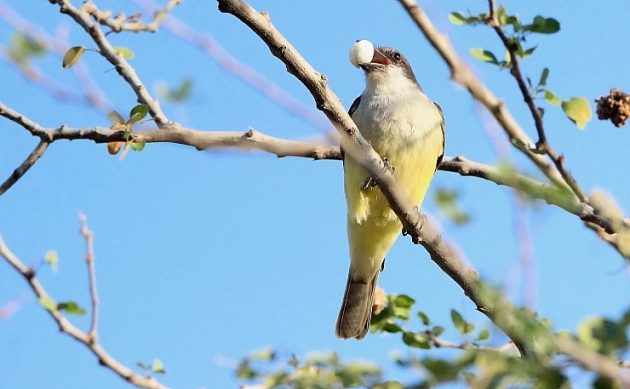
Streak-backed Orioles are a constant presence along the river at Paso Ancho.
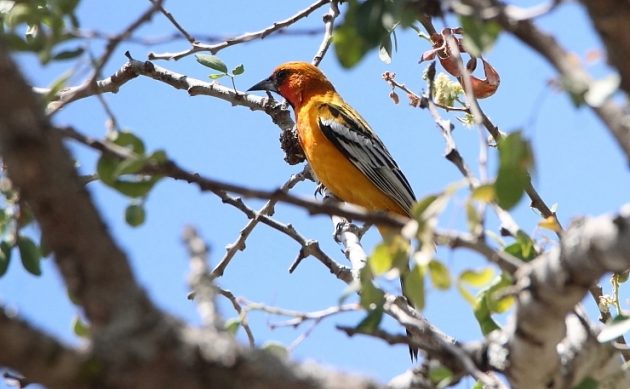
Endemic Rufous-backed Robins are also regulars, as well as being enthusiastic fruit-eaters.
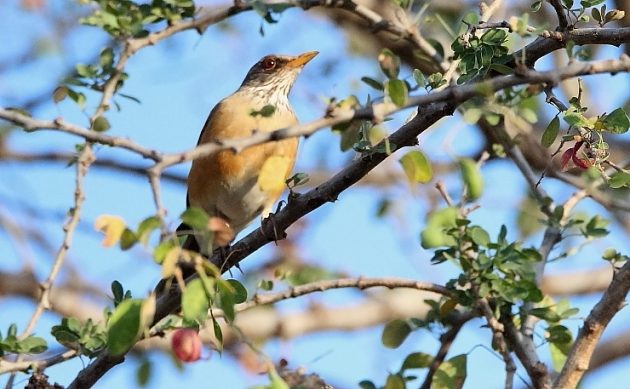
There’s nothing special about seeing Great-tailed Grackles down here. But you have to respect this one’s pose and attitude.
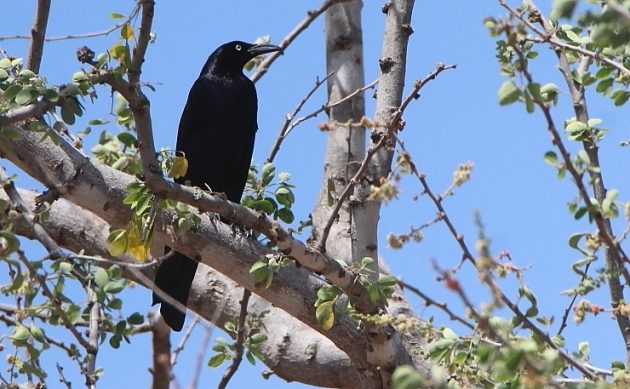
The nice thing about seeing Summer Tanagers late in their winter stay down south, is that they may have already returned to their full summer colors.

As I have mentioned in passing before, for Mexican birders Cedar Waxwings are THE story for the 2020-2021 winter. These gorgeous birds are rare and unpredictable most years here, but this winter, they seem to be everywhere. I have seen them in many spots in the highlands, including at my home and church lot. But I was a bit surprised to see them in the lower “Hot Country” as well, and was delighted to finally get some really nice photos. Thanks, Guamúchil!
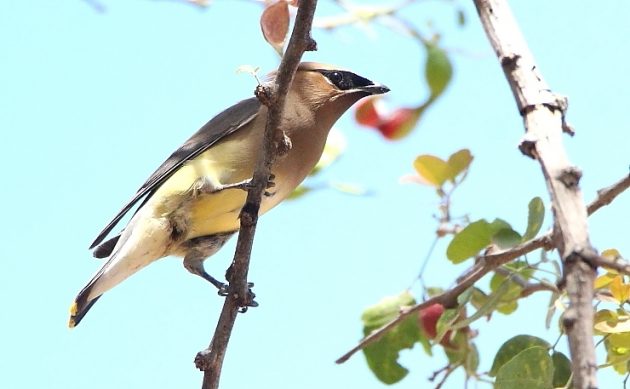
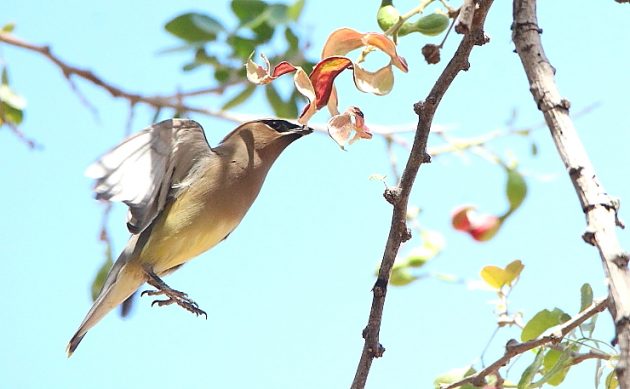
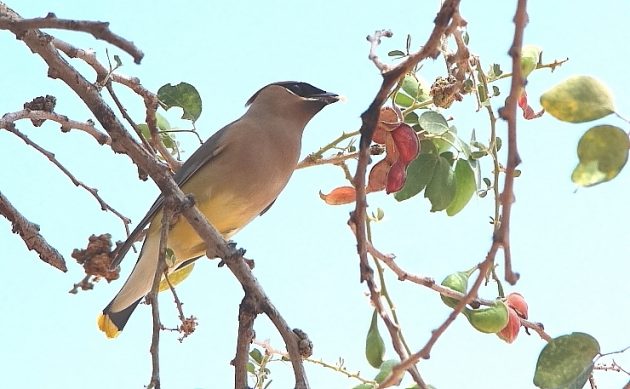
The photo at the top of this post was chronologically #2 in this series of 4.










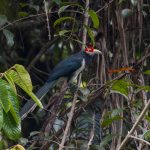
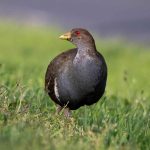

This is awesome, Paul! I love to read about the kinds of trees that attract great birds.
Thanks, Mike! Unfortunately, it’s probably not a good choice for New York State. And I have yet to get one established on our church property, although I’ll keep on trying.